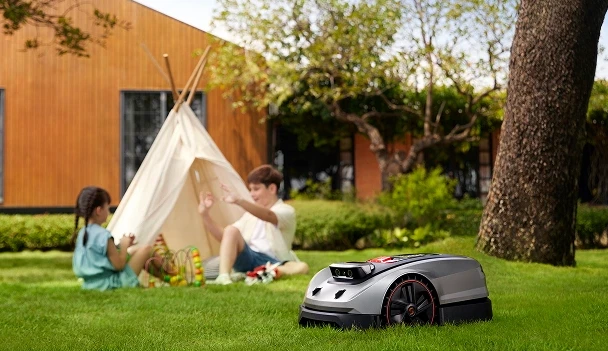Today, homeowners are increasingly turning to smart solutions for everyday tasks, and lawn maintenance is no exception. The automatic lawn mower robot has become a popular choice among people looking for a hassle-free way to maintain their yards. But a common question still lingers: Do automatic lawn mowers work on long grass?
This blog dives deep into how these innovative machines handle longer grass, the limitations they may have, and tips for using them efficiently in your backyard.
What is an Automatic Lawn Mower Robot?
Before addressing its performance on long grass, it’s important to understand what an automatic lawn mower robot actually is. Simply put, it’s a robotic device that autonomously trims your lawn using a set of sharp rotating blades. Equipped with advanced sensors, GPS technology, and AI, these machines navigate your yard, avoid obstacles, and return to their docking stations when low on battery.
Unlike traditional lawn mowers, the auto lawn mower robot is designed to cut frequently and in smaller amounts, keeping your lawn consistently tidy without needing your manual input.
Can an Automatic Lawn Mower Robot Handle Long Grass?
The short answer: Yes, but with some limitations.
While many modern auto lawn mower robots are powerful and equipped with sharp blades, they are primarily designed to maintain grass, not to perform heavy-duty cutting like traditional petrol or electric mowers. Long grass, especially if overgrown, can present a few challenges:
1. Strain on the Motor and Blades
If the grass is more than 10-15 cm high, the robot may struggle to cut through it efficiently. The blades can get clogged or dulled faster, and the motor may work harder than usual, possibly reducing the machine’s lifespan.
2. Reduced Battery Efficiency
Tall, thick grass demands more energy to cut. As a result, the robot may return to its charging station more frequently, slowing down the overall mowing process.
3. Uneven Cutting
On long grass, especially if wet or patchy, the robot might leave uneven patches or tracks. This could make your lawn look untidy unless it’s followed up by a second pass or pre-mowing.
Tips to Help Your Automatic Lawn Mower Robot Handle Long Grass
While an automatic lawn mower robot is better suited for routine maintenance, there are several ways to make it work even if your lawn has become overgrown:
1. Start with a Manual Cut
If your grass has grown excessively tall (e.g., after a holiday or wet season), consider giving it a trim with a traditional mower first. Once it’s back to a manageable height (ideally under 7–8 cm), let the robot take over regular mowing.
2. Set Mower Height Appropriately
Most auto lawn mower robots come with adjustable cutting height. Start with the highest possible setting and gradually lower it over a few days until you reach your preferred lawn height.
3. Mow More Frequently
Frequent mowing avoids the problem of long grass altogether. The automatic lawn mower robot is most effective when it trims a few millimeters of grass at a time, which keeps your yard looking fresh and prevents overgrowth.
4. Clear Obstacles and Debris
Long grass can hide rocks, branches, or toys. These objects not only obstruct the mower but can also damage the blades. Make sure your lawn is clear before sending the robot to work.
5. Use in Dry Conditions
Wet or damp grass can stick to the blades and internal parts of the robot, causing inefficiency or breakdowns. Mow during dry conditions whenever possible.
Advanced Features That Help Tackle Long Grass
Some newer models of auto lawn mower robots are better equipped to handle longer or tougher grass. Here are features to look for if you anticipate needing this capability:
- High Torque Motors – These provide the power needed to cut through thicker and taller grass.
- Multi-Zone Support – Helps you split the lawn into sections, allowing the robot to focus more effort where needed.
- Floating Cutting Systems – These allow the blades to adjust to uneven terrain or clumps of long grass.
- Grass Detection Sensors – Robots with this feature can detect higher grass density and adjust their speed or cutting power.
Brands like MoeBot, Husqvarna, Worx Landroid, and Robomow offer robotic mowers with such features, making them more capable in challenging lawn conditions.
Long-Term Benefits of Using an Automatic Lawn Mower Robot
Even if it struggles with long grass initially, investing in an automatic lawn mower robot has several long-term benefits:
- Healthier Lawn: Frequent trimming promotes healthier, thicker grass growth.
- Time-Saving: Say goodbye to weekend mowing sessions.
- Eco-Friendly: Most robots are electric and use less energy than gas-powered mowers.
- Quiet Operation: Robots are significantly quieter, allowing for early morning or late-night mowing without disturbing the neighborhood.
Conclusion
Yes, automatic lawn mower robots can work on long grass, but not optimally. They are best suited for maintaining short grass rather than cutting overgrown lawns from scratch. With the right preparation and mowing strategy, you can use your auto lawn mower robot even if your grass occasionally gets longer than usual.
If your lawn is currently overgrown, the best approach is a one-time manual cut, followed by robotic maintenance. Once the lawn is under control, your robot will keep it looking professionally mowed all year round—without you ever pushing a mower again.
Final Thoughts
In the world of smart home gardening, the automatic lawn mower robot is a game-changer. Whether you’re looking to free up time, enjoy a consistently neat lawn, or reduce your carbon footprint, these machines deliver impressive results. Just remember: they work best when they maintain a lawn rather than rescue it. So if your grass is tall now, cut it down once, and let your auto lawn mower robot take it from there!

